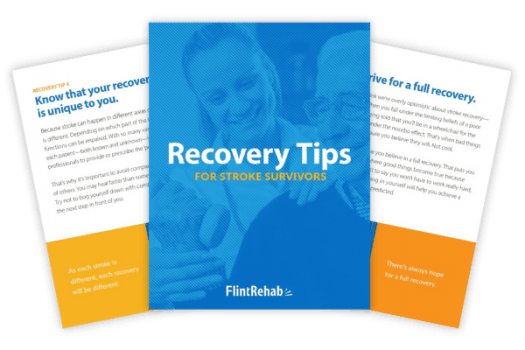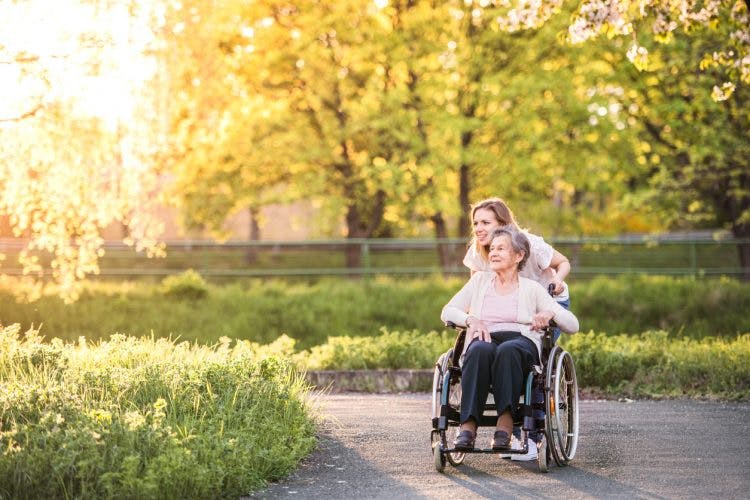Understanding Life After a Stroke: How to Navigate the Road to Recovery
Life after stroke involves many new changes and sometimes challenges. Fortunately, there is hope for recovery through rehabilitation and determination.
Survivors may need to make adjustments to their day-to-day life depending on the effects of their stroke, which can be physical, cognitive, and even emotional. Therefore, it is helpful for survivors to lean on loved ones for support and/or find stroke support groups. Healing after a stroke may take time, but it helps to know you are not alone.
To understand the recovery process, this article will discuss the effects of a stroke and how the brain heals. Then we can dive into some tips to help you navigate your new life after stroke.
Understanding the Aftermath of Stroke
A stroke can cause a variety of secondary effects depending on the areas of the brain affected. This can include a combination of physical, cognitive, and emotional effects such as:
- Hemiparesis (weakness on one side of the body)
- Hemiplegia (paralysis on one side of the body)
- Spasticity (uncontrolled movements)
- Foot drop (difficulty lifting the foot)
- Memory problems
- Poor balance and lack of coordination
- Speech and language difficulties
- Dysphagia (difficulty swallowing)
- Fatigue
- Anxiety or depression
Life after stroke involves adapting to these challenges while working towards recovery. Fortunately, many survivors can achieve this via neuroplasticity, the brain’s ability to heal and rewire itself. When the brain cannot effectively execute specific functions after a stroke, such as moving or speaking, the brain can recover by rewiring itself and creating new neural pathways or connections.
Neuroplasticity is best activated through repetition. Meaning, when a skill is highly practiced, neuroplasticity strengthens the neural pathways for that skill. This is how you can work towards recovery during life after stroke. The more a skill is practiced, the higher the chances of strengthening neural connections for that skill and restoring function.
Why Rehabilitation Is Key During Life After Stroke
The main goals of rehabilitation during life after stroke is to find coping strategies for any new challenges and to promote neuroplasticity. This will help survivors navigate life after stroke with as much independence as possible while also maximizing recovery.
Therapy can include a combination of:
- Physical therapy: To help improve mobility, transfers, range of motion, balance, and strength through repetitive, functional exercises and activities.
- Occupational therapy: To help you adjust to life after stroke and improve independence with the activities of daily living through task-specific self-care activities and adaptive tools.
- Speech therapy: To help improve cognitive and language skills, and also to help manage any swallowing difficulties.
Typically, survivors work closely with their therapists during the early months after a stroke. Once recovery slows down (the “plateau” phase), survivors are discharged to outpatient therapy or sent home to continue recovering independently.
How to Cope with Life After a Stroke
As you work towards recovery, you may experience stretches of time where you feel like you’re taking two steps forward and one step backward. This is normal and to be expected as rehabilitation gains often occur more slowly as time after a stroke progresses.
However, it is not always easy to maintain a positive mindset, and some survivors may need help coping with the emotional effects of a stroke such as anxiety and depression. To help you during this time, it is important to lean on friends, family, and loved ones for support. It is also important to speak with your doctor if you experience new or worsening anxiety or depression symptoms. They can provide you with a treatment plan that is best for your symptoms and lifestyle.
If you don’t have a strong support system at home, it can also help to join an in-person or online stroke support group to connect with other survivors. You can also ask your doctor for a referral to a psychotherapist who can help support you.
Along with support, here are some other helpful tips to help you cope with life after a stroke:
Focus on Healing the Brain
The brain is constantly healing, but this requires time, repetition, and rest. Give your brain the stimulation it needs to recover through rehabilitation while also allowing time for your brain to process this input with plenty of rest.
Adapt First, Then Overcome
To help you safely transition home, your therapist may recommend adaptive equipment and home modifications. They may also recommend using compensatory strategies while you learn to overcome some challenges, such as getting in and out of your bed or the shower. The goal is to use these tactics as you gradually improve and become more independent.
Make Peace with Slow
About 70-85% of survivors struggle with some form of muscle weakness after stroke. When movement becomes difficult, it can be challenging to accomplish daily tasks like brushing your teeth or walking around your home. It can help to embrace the slower pace of life as you work towards overcoming these challenges through therapy and persistence.
Celebrate Every Win
When you’re working hard, it can be easy to overlook the small gains that happen, but these deserve celebrating! To help with this, start a recovery journal to keep track of any challenges and triumphs. That way you can see exactly how far you’ve come.
A recovery journal can also help provide reassurance that the slower pace of life is temporary as long as you keep pursuing rehabilitation. All the small gains add up over time to create big improvements in function.
Address any Emotional Challenges
It is normal to struggle with feelings of sadness, grief, and even a loss of identify after a stroke, especially if your lifestyle has dramatically changed. Support yourself during this time through activities such as talk therapy or motivating books like Healing & Happiness After Stroke, which digs into the emotional side of recovery.
Allow Yourself to Question Everything
Life after a stroke should be full of curiosity. Every stroke is different, and every recovery process will be different. If someone tells you that you’ll never be able to walk, stay curious and keep pursuing therapy anyways. You’ll never know if you can achieve a full recovery from stroke unless you try. Additionally, many tasks can still be performed after a stroke by using compensatory strategies or assistive devices.
Never Give up Hope
There is always hope for recovery – even decades after a stroke. Whether it’s been months, years, or decades since your stroke, do not give up hope.
Stay Motivated to Keep Recovering at Home
As you navigate life after a stroke and push for a greater recovery, it is important to keep yourself motivated, especially at home. Your therapist can provide you with a home exercise program, although these are shown to have poor compliance rates over time, likely because they lack accountability and can become tedious. Fortunately, there are home therapy devices that can help you stay engaged and motivated.
For example, FitMi is a neurorehabilitation device designed to improve full-body mobility after stroke. It transforms therapeutic exercises into an interactive experience, where you follow along to instructions on the screen and unlock harder exercises as you improve. Because it provides an immersive experience, the FitMi can help you stay motivated to achieve your goals and promote recovery throughout your journey after a stroke.
Preventive Care During Life After a Stroke
Another integral part of life after a stroke is preventative care. Studies show that those who have had a stroke are at greater risk for a second stroke. That is why it is important to take preventative measures and make any lifestyle changes that will help you reduce the risk of a second stroke.
Some of the most common causes of stroke include high blood pressure, heart disease, high cholesterol, and diabetes. These conditions can be managed through medication prescribed by your doctor as well as a healthy diet for stroke patients that limits excessive salt and saturated fats.
Furthermore, staying physically active can help with stroke prevention and recovery. Experts recommend between 20-60 minutes of exercise after stroke per day, 3-7 times per week. Talk to your doctor and therapist to set healthy, meaningful goals for your unique recovery.
Moving Forward on the Road to Recovery
It can be challenging to move forward with life after a stroke. Although there are many obstacles and hurdles you may have to overcome, it helps to know that you are not alone. It is important to lean on family and friends for support, as well as other survivors who share a similar story to yours.
Additionally, it is important to remember that there is hope for recovery. Although a stroke can cause a variety of effects, including physical, cognitive, and emotional effects, they can be managed and improved with a proper rehabilitation plan.
We hope this article helped provide you with tips on how to navigate life after a stroke and encouraged you to pursue your goals.

Get our free stroke recovery ebook by signing up below! It contains 15 tips every stroke survivor and caregiver must know. You’ll also receive our weekly Monday newsletter that contains 5 articles on stroke recovery. We will never sell your email address, and we never spam. That we promise.
